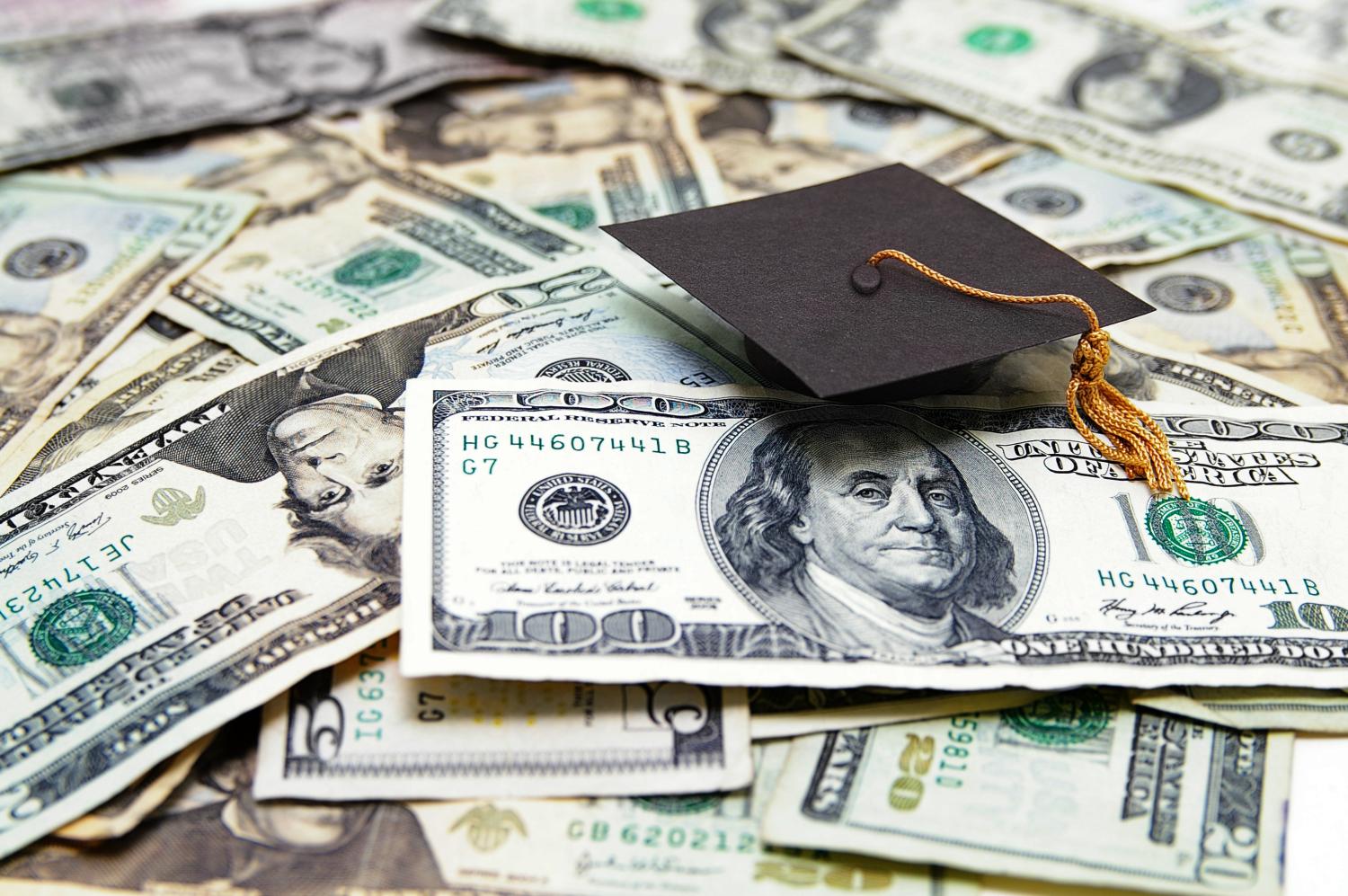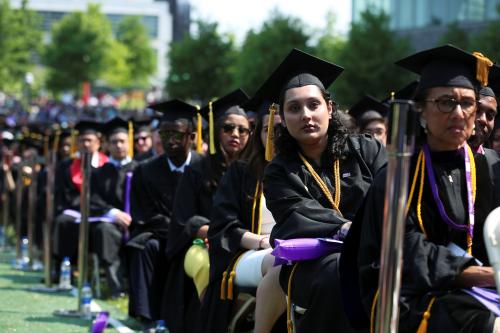Where does all that student debt come from?
Americans owe more than $1.5 trillion in student loans. Many struggle under the burden of those loans. But not all student loan borrowers struggle. Indeed, many thrive because of the education financed with their loans.
Individuals who owe student debt are an incredibly diverse group, spanning highly educated professionals to first-year dropouts. Some borrowers earn six-figure salaries their first year out of school, and some earn less than a high-school graduate.
One factor differentiating those who struggle with those who thrive is the program in which they studied. Updated data from the Department of Education’s College Scorecard, a unique source with data by institution and by field of study, reveal which programs Americans have borrowed to attend and how borrowers from those programs fare in the workforce after graduation. In short, it shows for whom student loans are a good investment and for whom they are not. This evidence is important as policymakers examine ways to reduce the burden of student debt on those who struggle.
The data show, for instance, that if you have a student loan, you’re more likely to be a well-paid professional. Table 1 lists the 20 programs that account for the largest amounts of student debt of graduates in the (combined) 2015 and 2016 academic years. (These data pertain only to graduates and exclude debts of people who failed to complete their degree.) The five degrees responsible for the most student debt are: MBA, JD, BA in business, BS in nursing, and MD. That’s one reason why the top 20 percent of earners owe 35 percent of the debt, and why most debt is owed by well-educated individuals.
The largest individual source of student loan debt is MBA programs, whose graduates owed 4.3 percent of all student debt in those two graduating years even though those borrowers represented only 2.6 percent of all borrowers. That’s because of the high cost of MBA programs and higher-than-average borrowing amount. In the year after graduation, the median MBA graduate earned $73,868. (For comparison, the average American full-time, full-year worker earned about $47,400.)

The list also features other high-paying professions like nurses, lawyers, pharmacists, dentists, diagnostic health professionals, or osteopaths (who, like MDs earn relatively modest salaries in their first years of residency, but whose incomes rise rapidly thereafter).
The table also shows that most borrowers graduate with student loan debts that are modest and commensurate with their earnings. MBAs borrow a median amount of $46,000 for their program and earn about $73,900 their first year out of school. (For perspective, under the standard 10-year repayment plan, the annual payment on a $46,000 loan at the graduate interest rate in 2016 was $6,084.)t Pharmacists borrow a lot ($126,000), but typically are placed into high-paying jobs ($119,700 their first year). (These data only show the debt associated with each specified degree; individuals who borrowed for multiple degrees will owe more.)
However, the Scorecard data illustrate troubling patterns in certain fields. Large numbers of students borrow to attend programs where graduates rarely earn more than a typical high school graduate (about $26,500). Even with modest debts, borrowers with weak earnings have difficulty paying their loans. And some borrowers attend programs with solid earnings, but which are nonetheless unsustainable given astronomical levels of debt they owe.
For example, a substantial 4 percent of all student borrowers graduating in these years earned an AA degree in Liberal Arts and Sciences. In the year after graduating, they earned a median salary of $24,671—less than the median earnings of high school graduates. While they typically borrow only $13,000, that is a sizable balance for an individual with essentially no discretionary income.
Sorting the data another way in Table 2—by the number of borrowers—paints a similarly mixed picture. Many top 20 entries are for degrees that lead to high-paying jobs, like degrees in nursing, business, and accounting. However, almost 3 percent of all graduates with student debt had degrees in Cosmetology (average earnings $16,600, and $9,900 in debt!). Four percent had the aforementioned AA in Liberal Studies ($24,670 in earnings and $13,000 in debt). And 3.3 percent graduated with BAs in Psychology, where typical earnings are barely above that of a HS graduate ($28,400) and lower than that of other BA program graduates, but comes with a typical debt burden of $22,900. It’s no wonder that so many of these students have difficulty paying their loans.

All told, aggregating the Scorecard data to the degree level in Table 3 shows that about 43 percent of student debt accrued by graduates was associated with Bachelor’s Degrees (representing about 52 percent of student borrowers in these years); 43 percent was accrued by graduate students (representing only 20 percent of students); and 14 percent of debt (owed by 28 percent of borrowers) was accrued for AA or undergraduate certificate programs. One obvious pattern in these data is that professional and doctoral degree recipients earn substantially more than other borrowers and yet represent disproportionate amount of debt.

Overall, the data show that many students are successful after graduation, accrue debts that are modest relative to their earnings, and thrive because of their educational investments. But clearly not all succeed—some borrow to attend programs like cosmetology or associate’s degrees in liberal studies that don’t lead to high-paying jobs. Others borrow large amounts that far exceed typical earnings in their field (like master’s degrees in arts like music, drama, or film).
It’s understandable that policymakers want to reduce the burden of student debt on borrowers, and they should. While approaches that treat borrowers uniformly—like across-the-board loan forgiveness—would help struggling borrowers, they also help high-income, well-educated, and advantaged students. That is expensive, inequitable, and unnecessary, because there are better policies available. For borrowers who have already completed their schooling, income-based repayment is intended to suspend or reduce loan payments of students with low earnings and high debts. Federal policymakers should make it easier to enroll upon graduation and remain enrolled thereafter.
Looking forward, the Scorecard data show that the struggles of borrowers are related to the programs they enroll in and how much those programs cost. Students should use the College Scorecard to better understand the consequences of their enrollment choices. And we should ask colleges and universities to do more to direct students—particularly career-oriented students—into programs that lead to good jobs and successful financial outcomes and to reduce the costs and loan burdens associated with lower-earning programs.
The Brookings Institution is committed to quality, independence, and impact.
We are supported by a diverse array of funders. In line with our values and policies, each Brookings publication represents the sole views of its author(s).






